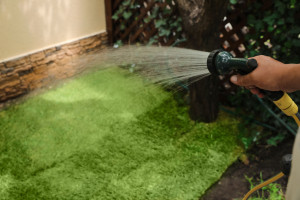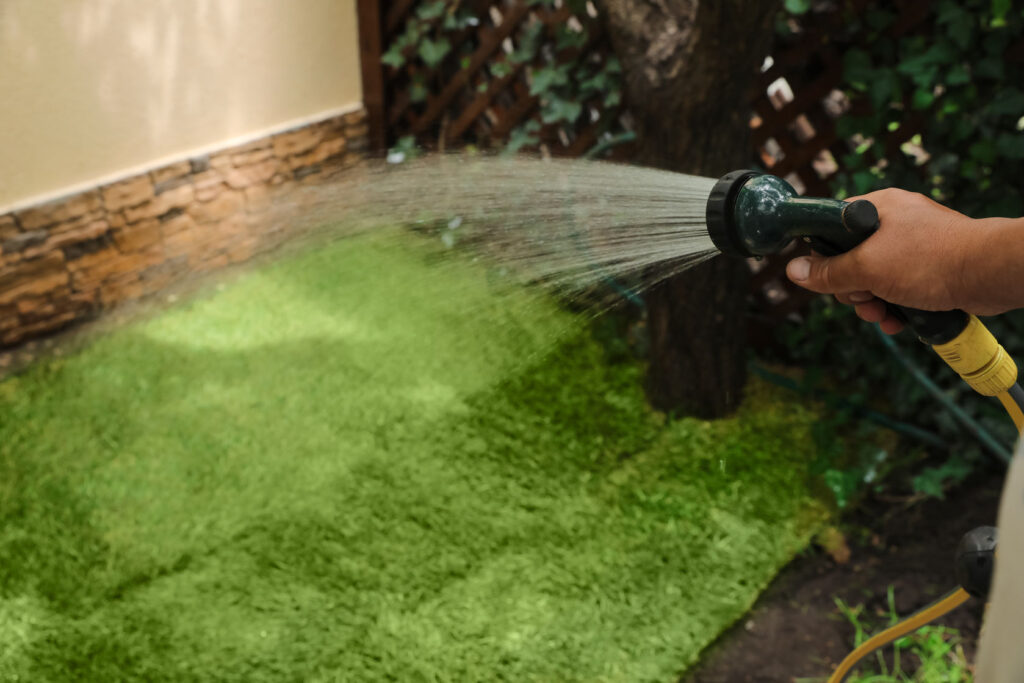 A common pest in residential lawns is sod webworms, a species that is native to the U.S. With that in mind, there are some circumstances that homeowners need to be aware of for keeping sod webworms in check.
A common pest in residential lawns is sod webworms, a species that is native to the U.S. With that in mind, there are some circumstances that homeowners need to be aware of for keeping sod webworms in check.
What are Sod Webworms?
Sod webworms are also known as lawn moths and are named for the web-lined tunnels where they hide during the daytime hours. Your lawn may appear to be lined with rows of spots that appear to randomly flit over the canopy of your grass during summer as you walk through your yard. These pests are white, tan, or brown-colored moths. As the University of Nebraska-Lincoln Department of Entomology describes them, adult moths have snout-like projections coming out of their heads and wings that wrap around their bodies. Sod webworms do not fly far before landing again. They aimlessly zigzag while flying.
According to The Family Handyman, entomologists estimate there are nearly 20 species of diverse sod webworms, “occupying a broad geographic area and adapting to different climates and growing conditions.” These pests can produce two or even three generations each season, but their lifespan is only a year. Sod webworms feed on all types of St Augustine grass, bluegrass, fine fescue, perennial ryegrass, and zoysiagrass lawns. Adult sod webworms do not cause damage to your lawn, but females lay up to 200 eggs as they fly around. Sod webworm larvae, on the other hand, are more problematic for homeowners. The caterpillars appear about a week after hatching and will chew grass leaves right down to the surface, potentially killing the grass.
Most homeowners will not even notice sod webworms until they notice the turf damage. If left unchecked, a severe outbreak of sod webworm caterpillars can kill large areas of a formerly healthy lawn. The caterpillars are nocturnal, so they feed only at night.
Infestation Signs
Homeowners should be looking for the following signs of a sod webworm infestation in their lawns:
- Small, saucer-sized brown patches of lawn that seem to expand, taking on the appearance of turf that is depleted by drought, where grass has been chewed down to the soil surface.
- Adult sod webworm moths over your lawn in the late afternoon or early evening, around dusk.
Getting Rid of Sod Webworms
Many lawn insecticides can effectively control sod webworms without costing a lot of money. There are also granular options for homeowners who prefer to use a fertilizer spreader instead of a lawn sprayer. Biological options also work well, but take longer to do so. Bacillus thuringiensis (subspecies kurstaki), is a beneficial bacterium, says The Family Handyman, that produces “a natural toxin that paralyzes the caterpillars” but is safe for humans and pets.
If you are going to apply insecticides, remember to water your lawn a day or two prior to doing so. Then apply the insecticide later in the day but before the caterpillars emerge to feed. Water again after applying to wash the product off the grass and into the ground.
Preventing Future Infestations
When it comes to choosing where to attack, sod webworms will do the same as other pests; a weakened lawn will be the target. So, take good care of your lawn with proper maintenance and care. Keep in mind that trimming grass too short causes scalping and thin turf, making your lawn dry out more quickly and leaving it susceptible to pests. St. Augustine lawns, which would be many here in our area, should be mowed at 2 to 4 inches while zoysia should be mowed at .5 to 2 inches. You should never cut more than one-third of the blade height during one mowing. Proper care and maintenance will leave your lawn healthy enough to fend off most pest challenges.
If you need help repairing your lawn or if you are ready for a new beautiful lawn, let Bayside Sod help! Learn more about us and find more tips on keeping your lawn healthy at our website.


